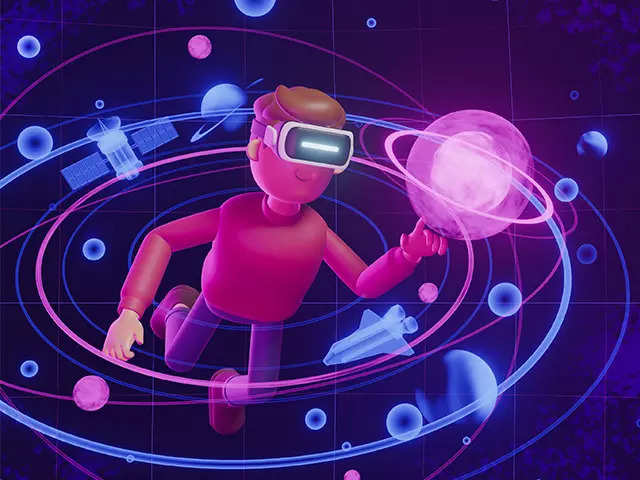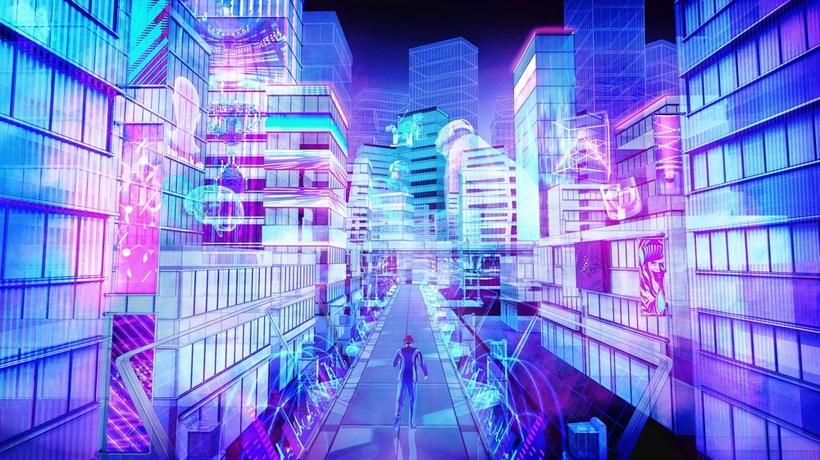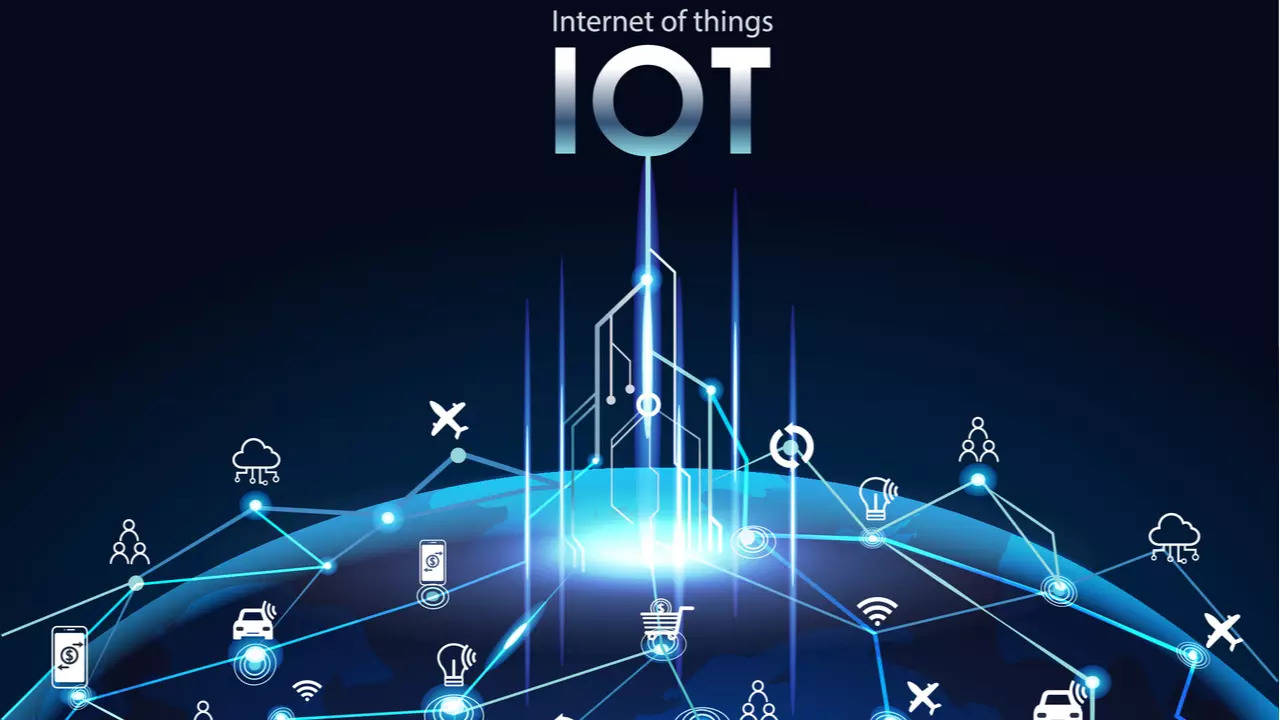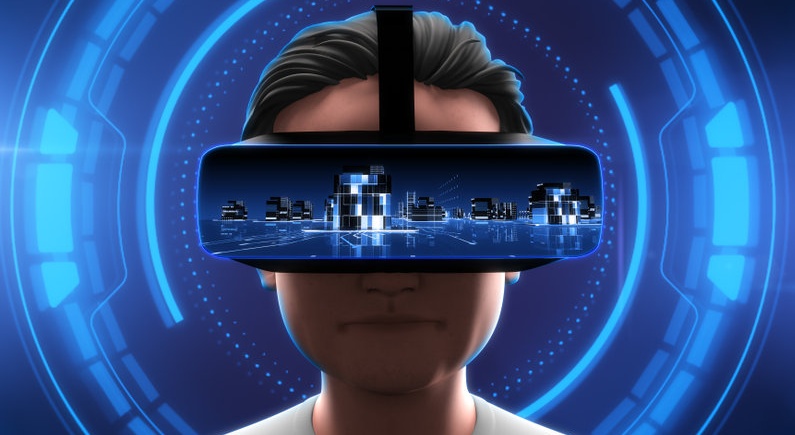The idea of a metaverse was first presented to the general public in Neal Stephenson’s science fiction novel titled “Snow Crash,” which was published that year (1992). He envisioned an online environment that was very similar to the real world, and people would use avatars to travel across it and escape the difficulties of the real world. After several years of effort and the commitment of billions of dollars, the world’s leading technological corporations have been successful in developing an online environment that they refer to as the metaverse. So, which technologies are responsible for turning the concept of a metaverse into a functioning reality?
In this article, we will investigate the reasons for the rapid rise in popularity of Metaverse as well as the variables that led to that rise. So, let’s dig in.
Why is the Metaverse more important now?
The metaverse is essentially a virtual world in which users are able to communicate with one another and participate in a variety of activities together, including gaming, socialising, and conducting business. In recent times, there has been a meteoric rise in the popularity of the metaverse as an increasing number of users have begun to take an interest in it and have gotten involved in it. This has contributed to the meteoric spike in popularity. With the increase in popularity, tech businesses have also begun pouring in their finances and attempts to grab the new emerging market sector. This coincides with the rise in popularity.It has become the destination of choice for users of the new generation as a result of cryptocurrencies, NFTs, and play-to-earn games. The significance of the metaverse may largely be attributed to the anticipation that it would play a pivotal role in the development of social media in the future. It is expected that in the coming days, weeks, and months, the metaverse will become a social phenomenon due to the new real world characteristics that it has made available, such as a 3D world, the ability to socialise with other people, gaming, and so on.
Even though the metaverse is now a real place, its existence was previously impossible without the development of certain technologies.
Blockchain

As the majority of applications in the metaverse are built on blockchains, blockchain technology serves as the foundation of the metaverse. To put it simply, it satisfies the metaverse’s requirements for decentralisation and transparency, which are essential to the system’s overall operation.Developers are able to incorporate multiple functions in the metaverse with the assistance of blockchain technology. These functions include the verification of digital ownership, the transfer of value, governance, digital collectability, accessibility, and interoperability. The technology behind blockchain offers a number of benefits, including –
By serving in the capacity of a virtual ledger, it contributes to the process of creating a record of the transactions. In addition, the data that makes up a blockchain is kept in a decentralised database, which helps to lower the risk of any kind of malfunction occurring.
To put it simply, blockchains are digital ledgers that collect and organise data into groups or “blocks.” These blocks have a restricted amount of storage and are closed once they are stuffed to capacity. After being filled in, this block is then connected to other blocks that have already been filled in, which results in the formation of a chain of data known as the blockchain.
A further benefit of the block chain is that it automatically organises the data in chronological order due to the fact that the data blocks are linked together to form the chain. The data are rendered unchangeable by this structure, which also generates a time stamp. Therefore, the outcome is predetermined once the block has been encased in cement. This plays a significant part in ensuring that the entire process is free from any kind of manipulation and offers transparency to the metaverse.
CryptoCurrency

One of the most important technologies that can be found in the metaverse is referred to as cryptocurrency. Cryptocurrencies are the sole forms of payment accepted on metaverse platforms. Before being able to utilise it for any kind of transaction, consumers are first need to convert their money from the real world into the cryptocurrency. It can be used to purchase resources like NFTs and digital real estate, as well as for making purchases within the game itself.
Because of the significant increase in the number of users investing in cryptocurrencies and the value of the commodity, it has become an extremely desirable possession to have. It is now more simpler to make use of and acquire cryptocurrencies due to the proliferation of platforms that are beginning to accept a diverse range of cryptocurrencies regardless of the type. Because of the wild swings in price that crypto coins are subject to, investing in them has become a popular way for people to make money off of other assets.
Within the metaverse, the value of cryptocurrencies is extremely high. If you wish to buy a piece of land in Decentraland, for instance, you will need to convert your currency from the real world into MANA, which is the game’s native coin. The situation is the same across all of the games and platforms that are available in the metaverse. Therefore, it should not be difficult for you to comprehend the value that the metaverse places on cryptocurrencies.
AR & VR

Engines for augmented reality and virtual reality both play a significant part in making it possible for metaverse to provide users with a captivating virtual experience. They contribute to the creation of immersive and interesting worlds in three dimensions for the metaverse.
There are a number of distinctions that can be made between Virtual Reality and the metaverse, despite the fact that both may appear to be the same thing. Some of the most notable distinctions between the two are as follows:
The term “metaverse” refers to the larger context in which virtual reality exists. The Virtual Reality technology is complemented by a number of other cutting-edge advancements that come together to form the metaverse.
Virtual reality (VR) gives users the ability to view simulations in three dimensions; nevertheless, the technology behind VR cannot produce physical simulations, which are a critical component of the metaverse.
Augmented reality is where it shines in this scenario. By giving users the ability to truly experience things through the creation of simulated physical environments, it broadens the breadth of the metaverse. As a direct consequence of this, users are able to sense, hear, and interact with the virtual metaverse in the same way that they would if they were physically present in it. It is anticipated that the marriage of Virtual Reality and Augmented Reality technology would result in the creation of a metaverse that is more true to life and will attract enormous investments from a variety of businesses.
Artificial Intelligence

The incorporation of artificial intelligence into every aspect of our life is rapidly approaching being unavoidable. Artificial intelligence is used in everything from personal assistants like Alexa and Siri to technological advancements like smart air conditioners that help us get to sleep. Therefore, it is only natural to anticipate that the metaverse will also make use of artificial intelligence in order to enhance its capabilities.
Artificial intelligence plays a significant part in making every process that takes place in the metaverse an immersive one. This includes everything from the planning and decision-making of business strategies to the acceleration of computers and the improvement of user interfaces. Through the utilisation of machine learning strategies, it can assist in the processing of data at a breakneck speed. Within the context of the metaverse, AI algorithms are able to make use of previous historical data in order to generate original outputs and insights.
The usage of non-player characters (NPCs) in a variety of scenarios is another potential use for artificial intelligence. Nearly all video games feature non-playable characters, or NPCs, which are typically programmed to react in some way to the players’ actions. The responses and reactions of these characters can be made to more closely resemble those of real-life people with the assistance of artificial intelligence. Because NPCs are able to carry out multiple processes independently and in multiple languages, AI’s processing capabilities can also be used to place NPCs across all segments in the metaverse to improve user interface. This is possible because NPCs can speak multiple languages.
The development of metaverse avatars is yet another significant application of artificial intelligence within the metaverse. AI algorithms can analyse photos in both two and three dimensions to produce avatars that look and behave more realistically. AI has the potential to further enhance the appearance of avatars by contributing to the creation of a variety of facial expressions, hairstyles, clothing, and other distinguishing characteristics.
3D Reconstruction

Although 3D reconstruction is not a new technology, its utilisation has significantly increased as a result of the recent pandemic. This is due to the fact that during the lockdown, prospective customers were unable to visit stores or properties in person. As a result, a number of businesses have started to implement 3D reconstruction technology in order to create virtual property and showroom tours. It was to be anticipated that these kind of advancements would eventually make their way into the metaverse.
Because the Metaverse has always been focused on creating a 3D virtual world, it should not come as a surprise that 3D construction plays a significant role in the process of turning the Metaverse into a reality. To construct a setting in the Metaverse that is an accurate representation of the physical world is one of the most difficult tasks to do. Users are aided in the creation of models that are more realistic and lifelike through the utilisation of specialised 3D cameras and other reconstruction technologies. These technologies render realistic 3D photographs and models of buildings, items, and features. The information obtained from 3D cameras and 4K photography is then fed into computers, which generate lifelike stimulations for usage in the metaverse. These stimulations are intended to be employed in virtual reality applications.
Therefore, 3D reconstruction technology is an integral component of the metaverse, and the importance of this technology is likely to increase as the number of users who want the metaverse to have a higher degree of resemblance to the real world increases.
Internet of Things (IoT)

The term “Internet of Things” (IoT) was first coined in 1999, and it refers, in its most fundamental form, to a system that takes every component of our physical environment and connects them to the internet through the use of sensors and other devices. Once connected, each of these devices will have a distinct identification and the capacity to automatically send or receive information. The introduction of devices like voice-activated speakers, thermostats, and medical equipment that are able to independently process the data received and carry out the activities that have been prescribed is the most tangible illustration of the notion of the Internet of Things that has been seen to date.
In the context of the metaverse, the Internet of Things offers a plethora of benefits, including the following:
Applications will have the capability to collect data and send it to the metaverse so that it can more accurately adjust to the conditions of the real world. For instance, data on the weather or temperature that is gathered through the Internet of Things can assist the metaverse in adjusting its surroundings.
Another advantage of the Internet of Things is that it may connect the 3D world to a huge number of devices from the actual world in a seamless manner, which enables stimulations in the metaverse to take place in real time.
The Internet of Things can also employ artificial intelligence and machine learning algorithms to further improve and optimise the environment of the metaverse by managing the data that it collects.
Edge Computing & 5G

Edge computing is typically implemented in business settings in order to facilitate faster data transfer with less delays and to enable more seamless experiences for customers. Since computers must be able to efficiently process the intense stimulations to minimise lag and ensure that users have an immersive and unhindered gaming experience, this is one of the primary factors that has made the metaverse a reality.
The advent of 5G networks is another significant development that is frequently used in tandem with edge computing. When interacting with the metaverse, users previously encountered frequent network issues due to slow rendering and data transfer speeds caused by a lack of fast internet speed. More people will be able to access the metaverse from their computers and other devices without experiencing any lag in network speed once 5G is rolled out and made available at affordable prices.
Therefore, users can now participate in the metaverse and experience a truly immersive environment thanks to the combination of edge computing and 5G.
Challenges to the Metaverse
Edge computing is typically implemented in business settings in order to facilitate faster data transfer with less delays and to enable more seamless experiences for customers. Since computers must be able to efficiently process the intense stimulations to minimise lag and ensure that users have an immersive and unhindered gaming experience, this is one of the primary factors that has made the metaverse a reality.
The advent of 5G networks is another significant development that is frequently used in tandem with edge computing. When interacting with the metaverse, users previously encountered frequent network issues due to slow rendering and data transfer speeds caused by a lack of fast internet speed. More people will be able to access the metaverse from their computers and other devices without experiencing any lag in network speed once 5G is rolled out and made available at affordable prices.
Therefore, users can now participate in the metaverse and experience a truly immersive environment thanks to the combination of edge computing and 5G.
Conclusion
The metaverse is here and expanding at a rate never seen before. However, the world has witnessed similar projects rise and then fade from memory. The metaverse needs to be resilient if it’s going to be the social media platform of the future. This will only be possible if the fears that plague the metaverse are swiftly dispelled and the faith of the masses is restored in the endeavour. The question of the hour is whether the metaverse will rise to the occasion and capitalise on these abundant chances or fall short and be buried as a failed enterprise that lost the world’s confidence.

















Leave a Reply